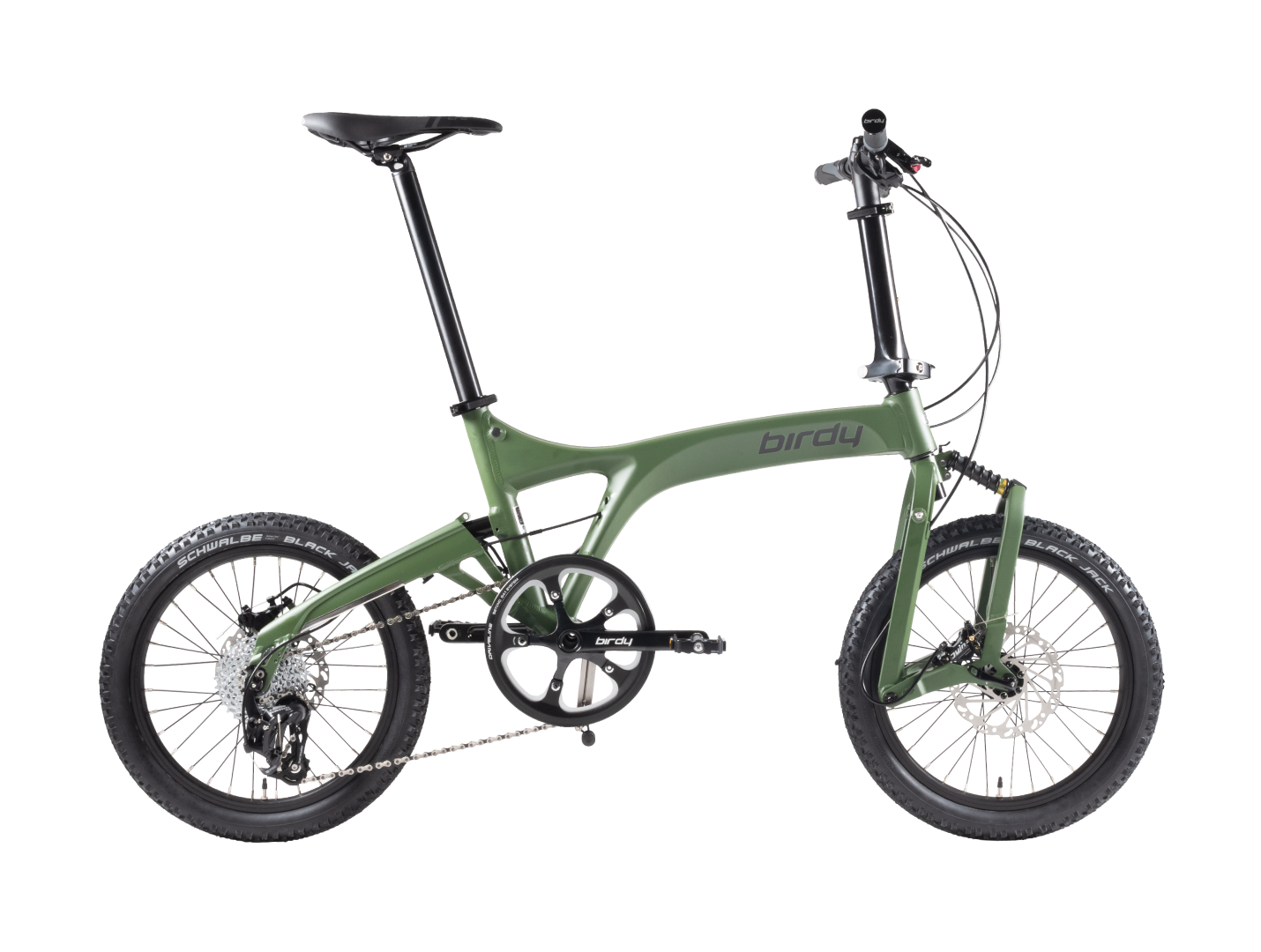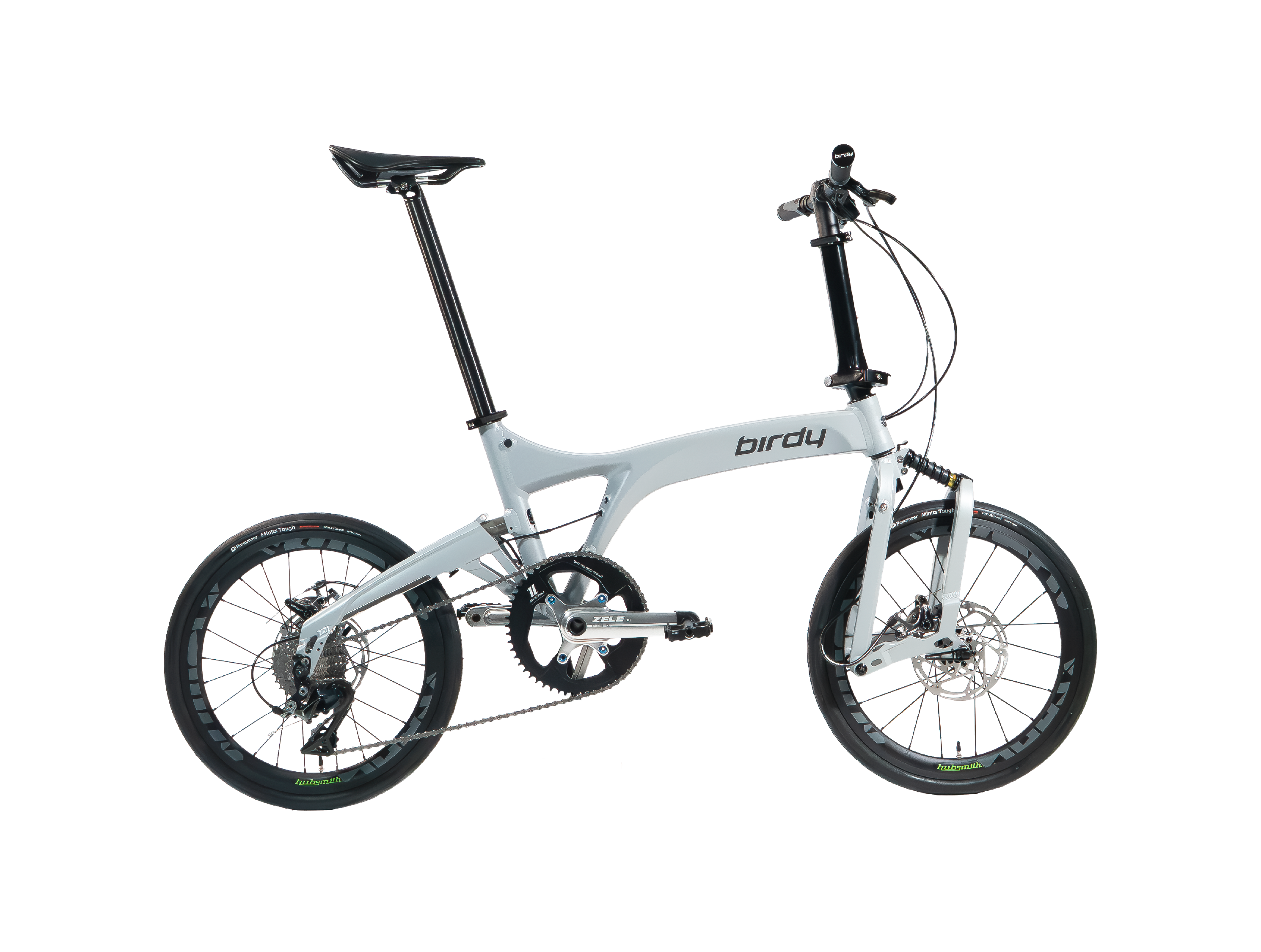Introduction
During the 2010s, a new type of bicycle began to take the cycling world by storm. “Gravel bikes”, as they were dubbed by manufacturers eager to cash in on this new niche, skyrocketed in popularity in the last decade. Here at Mighty Velo, Singapore’s premier folding bicycle shop, we offer two Birdy models that fit within this category: the Birdy Gravel and JK11 Gravel.
People new to the world of cycling may be left wondering: what exactly is a gravel bike? How do gravel bikes compare to more established and well-known bike types, such as road bikes and mountain bikes? Gear up and join us as we explore the purpose and features of gravel bikes, and how they compare to road and mountain bikes…
What are gravel bikes designed for?
You’ll probably be aware of bike classifications such as road bikes and mountain bikes. These two different bike types have very clear usage cases and specializations. Road bikes are built towards pure speed and efficiency on flat roads, while mountain bikes are designed for being able to tackle the roughest and steepest terrain.
But what about routes that may feature both long, flat stretches of road and some difficult terrain? Or what if someone just wants a bike that he can ride both on the highway and on some trails, so that he doesn’t need to splurge on two more specialized bikes?
That’s where gravel bikes come in. They’re meant to tackle a niche between that of road bikes and mountain bikes, bridging the gap between these classifications. Gravel bikes are designed to combine a road bike’s higher speed and efficiency with a mountain bike’s ability to ride on rough and loose terrain. Although they might not be as good at racing down the asphalt as a road bike, or as capable of surmounting difficult wilderness trails as mountain bikes, they’re far more well-rounded and versatile than other bike types.
In a small country like Singapore, such a niche is especially relevant. One can easily cross from road through pavement and the PCN to off-road trails in the span of twenty minutes. Gravel bikes like the Birdy Gravel are thus a popular and useful choice of transportation, since they can perform well on all of these terrain types.
Common features
What are some common features of gravel bikes that allow them to fulfill their role well?
First off, their tyres are usually relatively wide and feature tread patterns that allow for better grip on mud or rough terrain, often with the use of knobs. Wider tyres mean that the bike is more stable and handles better on uneven terrain.
These tyres are also usually the main means of cushioning shocks and impacts for gravel bikes. The majority of gravel bikes don’t offer full suspension, in the interest of keeping their bikes lighter so as to not sacrifice speed on the road.
Some exceptions would be the Birdy gravel bikes – the Birdy Gravel and Birdy JK11 Gravel. Both of them feature full front & rear suspension, allowing them to easily handle bumps in the road, while still being relatively light and speedy thanks to their lightweight monocoque frames.
Gravel bikes also almost universally make use of disc brakes. This is because disc brakes are very consistent and offer effective stopping power, both extremely important traits when going down steep slopes or uneven roads. Disc brakes also leave plenty of room for the wide tyres that gravel bikes have.
The components of gravel bikes are intended to offer a gearing range somewhere in between that of road bikes and mountain bikes. Gravel bikes usually have a wide range of gears, in order to be capable of making steep climbs. Their range of gears also tends to be skewed slightly towards the lower side.

Differences from road bikes
While gravel bikes are intended to retain some of the speedy functionality of road bikes, there are several major differences that allow gravel bikes to be much more useful on rougher terrain.
For one thing, their wider tyres and the tread patterns featured sacrifice some speed and agility on flat terrain in return for much greater stability and grip on rough or uneven ground.
They also have a wider range of gears, in order to be prepared for a wider range of terrain. This range of gears will also be lower than that of road bikes, allowing them to easily tackle steep uphill climbs, in return for losing some efficiency at top speed.
Gravel bikes will also feature a more upright riding position than most road bikes, thanks to adopting the geometry of mountain bikes. This allows for greater comfort and convenience, especially on slopes or climbs.
Finally, gravel bikes will almost always have heavier frames than road bikes, as they need to be more robust in order to tackle the rigours of off-road trails. This also negatively affects their acceleration and top speed.
Differences from mountain bikes
Compared to mountain bikes, gravel bikes will usually feature tyres that aren’t quite as wide, with tread patterns that aren’t so extremely specialised for off-road terrain. While this does mean they will sacrifice some grip and stability, they also allow the bike to handle with much better speed and agility on flat terrain.
Their gear range usually won’t be quite as wide or low as mountain bikes, with several higher gear options. This allows them to still be competitive at higher speeds on flat terrain, at the expense of extremely low gears that make the steepest climbs a breeze.
A common feature amongst many, but not all, gravel bikes is the usage of dropbar handles (modeled after their road bike cousins). Mountain bikes almost always forgo dropbar handles.
Finally, gravel bikes usually won’t be quite as heavy as mountain bikes. This allows them to be faster and more responsive, and also to accelerate and stop much quicker.

Birdy’s Gravel Bikes
Now that we’ve taken a look at gravel bikes’ common features, and compared them to that of road bikes and mountain bikes, it’s clear that gravel bikes fill an important niche that many cyclists may not even be aware of. Their versatility means that gravel bikes are an excellent choice for cyclists who want to be prepared for any terrain, or cyclists who can only afford one bike that they’ll have to take everywhere they go.
Out of all the gravel bikes, the Birdy Gravel and Birdy JK11 Gravel stand out as fantastic exemplars of gravel bikes’ best traits while having a few unique functions of their own. The Gravel has wide, grippy Schwalbe Black Jack tyres and a SRAM derailleur offering precise and fluid actuation even in challenging terrain. Meanwhile, the JK11 Gravel has 18” Billy Bonkers tyres and a Shimano Ultegra 11 speed derailleur offering the ability to overcome uneven surfaces and climb smoothly. So far, these aren’t uncommon features amongst gravel bikes.
What makes these Birdy bikes stand out, however, are their full front & rear suspension systems – a rarity amongst gravel bikes – and their light weight. The JK11 Gravel only weighs about 11kg, much lighter than most gravel bikes. These features both make the Birdy bikes much more comfortable to ride, even over rough terrain, and also much easier to carry. That’s not to mention their status as folding bikes, meaning they can also be brought into public transportation or packed into luggage and car boots.
Out of a crowded bike market, gravel bikes stand out as an adaptable and reliable option. And out of these gravel bikes, the Birdy Gravel and JK11 Gravel foldable bicycles go above and beyond in redefining versatility.














.png)
-01.png)







.webp)

.webp)









.webp)


.webp)
.webp)
















.jpg)







































